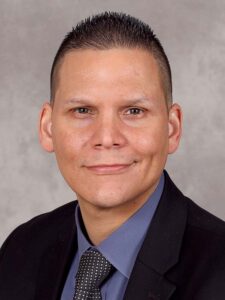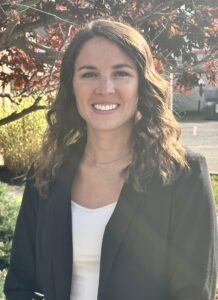Drugs and the pandemic have created more challenges recently
By Steve Yablonski
Mental health is an issue, according to Jiancheng Huang, director of public health for Oswego County.
“Yes, it is a big concern,” he said. “But it has multiple facets.”

Among those facets in Oswego County are suicides, drug addiction, child neglect and abuse, domestic violence, and shortage of mental health professionals, Huang said.
“Most recently, the COVID-19 pandemic has exacerbated the situation,” he added.
Physician Omar Colon, who oversees mental health and behavioral health services for Oswego Health, agreed with that assessment. “Mental health has been an issue in Oswego County for many years. It has recently been getting worse due to the pandemic. Our numbers have been climbing.”
Oswego Health operates a 32-bed inpatient unit and related outpatient behavioral health clinic facilities at the Lakeview Center for Mental Health on East Cayuga Street, Oswego.
The numbers from the emergency department have been skyrocketing, even for kids, he said.
“It’s imperative that we take care of mental health issues,” he said. “It’s really frustrating; the last couple years have been really tough.”
Opioids Are An Epidemic

“Drugs have been a problem in our area; opioids, molly and marijuana as well. A lot of drugs have infected our community from adults to kids,” Colon said. “It’s really challenging.”
They are encountering a lot of people who are ending up in the hospital due to psychotic breaks or overdoses, he said.
“It is not uncommon to see comorbidity of mental health and substance use disorders,” said Eric A. Bresee, executive director, Farnham Family Services. “Historically, 60%-70% of people receiving treatment at Farnham have a dual diagnosis indicating both mental health and substance use disorders.”
Measuring Success
“It’s really difficult to say; we try to provide services as much as we can,” Colon said. “When the pandemic hit that exacerbated the number of patients that were getting sick and it was also limiting the number of services that we can provide. I think the best way that we can deal with all this is through collaboration with different programs, making sure that we all have access to information.”
There are several ways that mental illness can manifest, Colon noted.
It can be not having people around to support us, pressure in many different ways, such as the loss of a family member, a loss of a job or medical problems.
“So a lot of things can be factors to start causing us to develop a mental illness. When we develop a mental illness it can manifest in many ways,” he said. “People might start feeling down or depressed. They might not be sleeping well. If things get worse, they could develop thoughts of harming themselves or others. It’s very concerning.”
Some people develop a lot of anxiety.
For example, “the transition from ‘normal’ to pandemic was so much of a change, so quickly at the start, it impacted our lives like the loss of a job or a loved one, Colon said.
“But it was worldwide. So a lot of people that were vulnerable, they are facing mental illness now more than ever,” he added.
Battling Drugs
Vera Dunsmoor, a registered nurse who is the director of patient services for Oswego County, leads a state-funded program to address overdose.
“I’m working on a grant for an overdose program,” Dunsmoor said. “It is absolutely needed. There is a big need for this.”
They look at opioid data and the county’s program is built around that information, she explained, adding that “the problem has been exasperated due to the pandemic.”
“We are really starting to look at the data. We developed our work plan around our information and data. It helps us to provide direct prevention activities,” she said. “We work with other health providers and systems to reduce the unsafe exposure to opioids and addictions.”
They do that by conducting academic detailing in the community.
“We’re working on increasing education. For naloxone, we are focusing on doing training in different areas of the county; trying to reach those who might not be familiar with Narcan,” said Meghan Tice, a public health educator for Oswego County.
Naloxone, also known as Narcan, is a prescription medicine that reverses an overdose by blocking heroin or other opioids in the brain for 30 to 90 minutes.
“To increase access to naloxone, Meghan is going out and doing a lot of training in the community, training classes on how to use naloxone,” Dunsmoor said.
“We do training and then a person would receive a kit to take with them. We also provide more detailed training that can take upwards of 35–40 minutes,” Tice added.
“We had an increase in 2019 in overdoses. The numbers have been higher after that,” Dunsmoor said. “There was a down tick then at the beginning of the pandemic. I don’t know if it was because of the lockdown and every body was scared, but then it did come up quickly.”
“The more we can educate people, the more lives we can save, hopefully,” she added.
Farnham started conducting walk-in access for the opioid treatment program.
“The best times to walk in for connection to the opioid treatment programs are Monday to Thursday, in the morning. If people need help they should not wait; call or come in anytime during our regular business hours,” Bresee said.
Mental health diagnosis related to anxiety, depression and mood disorders are amongst the most common, he said.
Virus Concerns
A lot of people are not seeking help, due to fears of catching the virus. That is creating challenges for all health care providers.
“We do educational programs at certain times for our community and we try to collaborate with other agencies as well so people know about our services and how they can access them,” Colon said. “We try as much as possible. We collaborate with other agencies to raise awareness about mental health. There are several programs in place. A clinic in Lakeview Center for psychiatric care; a clinic in Fulton and we collaborate with others as well like Farnham … we all work together.”
Local Resources
ARISE — Mental Health Services
Phone: 315-887-5156
Address: 113 Schuyler St., Fulton
www.ariseinc.org
Beacon Psychological Services
Phone: 315-216-6862
Address: 317 W. First St., suite 112, Oswego
beacon514@hotmail.com
www.beaconpsychologicalservices.com
Catholic Charities of Oswego County
Phone: 315-598-5980
Address: 808 W. Broadway, Fulton
www.ccoswego.com
ConnextCare
Phone: 315-298-1920
Address: 61 Delano St., Pulaski
www.connextcare.org/MentalHealth
Child Advocacy Center of Oswego
Phone: 315-592-4453
Address: 163 S. First St., Fulton
www.oswegocac.org
Farnham Family Services — Oswego Location
Phone: 315-342-4489
Address: 283 W. Second St., suite 200, Oswego
www.farhnaminc.org
Lakeview Center for Mental Health & Wellness — Adult Outpatient Services
Phone: 315-326-4100
Address: 29 E. Cayuga St., Oswego
www.oswegohealth.org/behavioral-services
Liberty Resources Integrated
Health Care
Phone: 315-887-1840
Address: 14 Crossroads Drive, Fulton
Oswego County Opportunities, Inc.
Phone: 315-598-4717
Address: 239 Oneida St., Fulton
www.oco.org
SUNY Oswego Counseling
Services Center
Phone: 315-312-4416
Address: 202 Hewitt Hall, SUNY Oswego campus
www.oswego.edu/counseling-services



